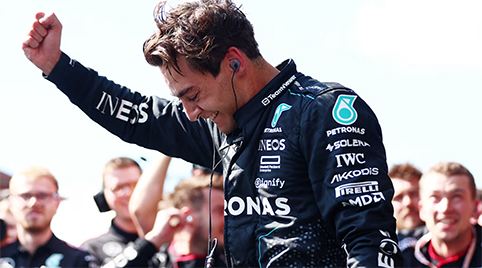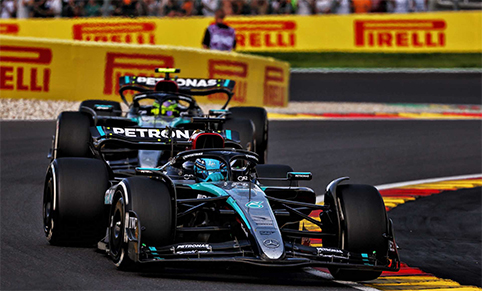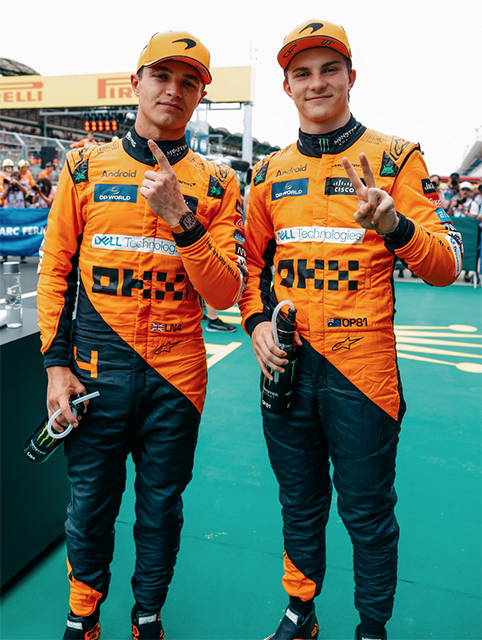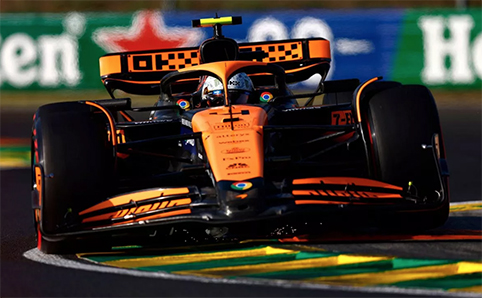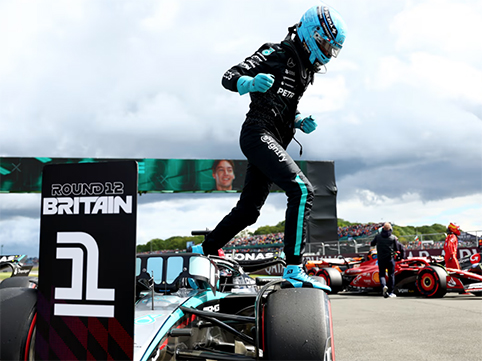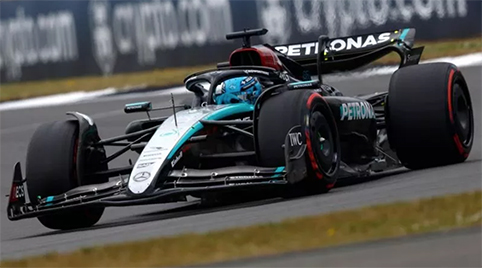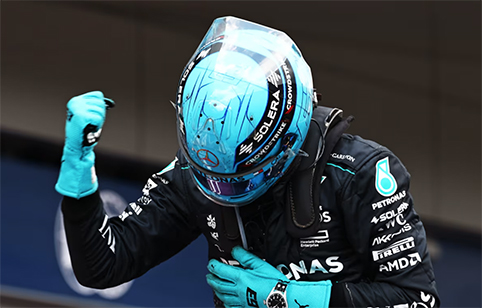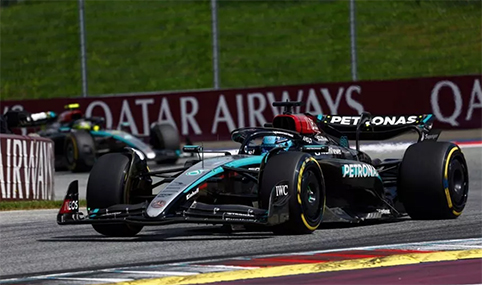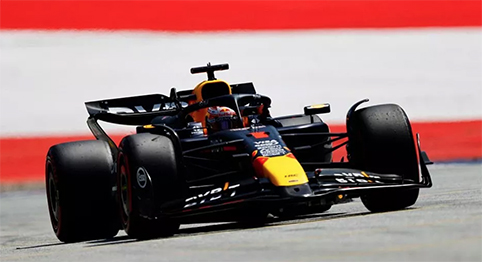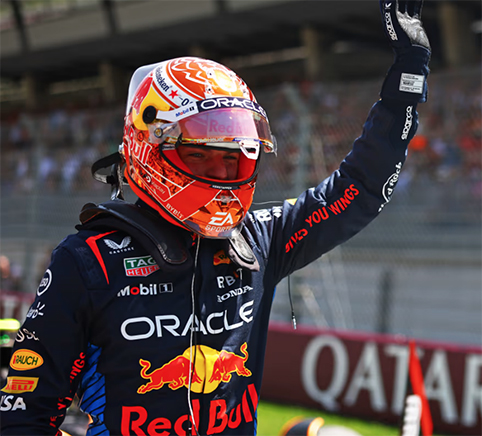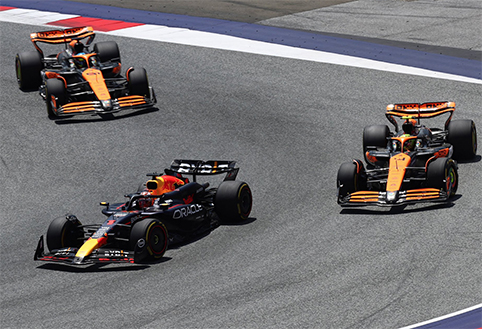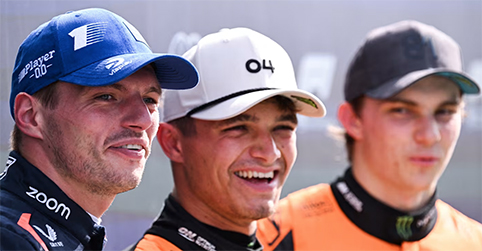
Lando Norris achieved his fourth career pole position by taking the top grid spot ahead of fan favourite Max Verstappen at the Dutch Grand Prix. Oscar Piastri was third fastest in the other McLaren.
George Russell finished in fourth after setting the pace in Friday’s practice. Not so for Lewis Hamilton, who fail to progress from Q2 in a session where all the drivers were struggling to build tyre temperature on the cool track surface that was very green after further rain hit the event earlier on Saturday.
Norris led Q3 throughout – his initial lap of one minute, 10.074 seconds on the first runs putting him ahead of Piastri and Verstappen at this stage.
Verstappen led the pack around for the final go and improved significantly to rise to provisional pole with a time of one minute, 10.029 seconds, gaining particularly from a very strong middle sector, but Norris’s final sector was better.
Norris roared to the top with a lap time of one minute, 09.673 seconds – the only driver to break that barrier – as Verstappen was pushed to 0.356 seconds adrift.
But Piastri could not knock the crowd hero off the front row as he paid the price for not going quicker than before in the middle sector and finished 0.499 seconds down on his teammate despite putting in a personal best time at the end.
Russell did enough to beat Sergio Perez to fourth, with Charles Leclerc the lead Ferrari in sixth.
Fernando Alonso and Lance Stroll ran offset to the rest in the middle of Q3 as they only had one set of new tyres left for the final segment, as did everyone except the McLarens, Verstappen and Russell.
Alonso took seventh and Stroll ninth, with Alex Albon getting in between them and Pierre Gasly behind in P10.
In Q2, Leclerc’s last-gasp improvement knocked out his Ferrari teammate Carlos Sainz, who had not driven on the softs this weekend pre-qualifying due to his Friday gearbox issue and the rain seen so far at this event. Hamilton missed the cut behind in P12.
Then came Yuki Tsunoda and the Haas duo of Nico Hulkenberg and Kevin Magnussen.
In Q1, Perez’s jump from the drop zone to head the segment using an extra set of softs shuffled Daniel Ricciardo to a early exit for RB.
Perez’s extra lap was required after his first attempt was impeded coming across Hamilton going slowly on the outside of Turn 9 in an incident that will be investigated now the session has concluded.
Esteban Ocon could not find the same improvements due to the track evolution factor and was out in P17 despite setting a personal best time on his last Q1 lap, with the Sauber pair of Valtteri Bottas and Zhou Guanyu also out after doing their final efforts ahead of many others.
Logan Sargeant missed qualifying for Williams as his car could not be repaired in time after his massive FP3 crash.
So another Norris versus Verstappen fight for the race win. Can Lando upset the home fans by winning at the Dutch Grand Prix? Bring on the race!
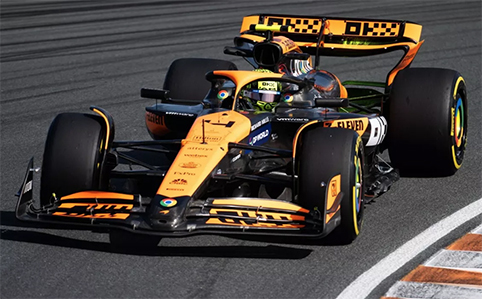
Dutch Grand Prix, qualifying positions:
1 Lando Norris McLaren 1:09.673
2 Max Verstappen Red Bull 1:10.029
3 Oscar Piastri McLaren 1:10.172
4 George Russell Mercedes 1:10.244
5 Sergio Perez Red Bull 1:10.416
6 Charles Leclerc Ferrari 1:10.582
7 Fernando Alonso Aston Martin 1:10.633
8 Alexander Albon Williams 1:10.653
9 Lance Stroll Aston Martin 1:10.857
10 Pierre Gasly Alpine 1:11.718
11 Carlos Sainz Ferrari 1:11.327
12 Lewis Hamilton Mercedes 1:11.375
13 Yuki Tsunoda RB 1:11.603
14 Nico Hulkenberg Haas 1:11.832
15 Kevin Magnussen Haas 1:11.630
16 Daniel Ricciardo RB 1:11.943
17 Esteban Ocon Alpine 1:11.995
18 Valtteri Bottas Sauber 1:12.168
19 Zhou Guanyu Sauber 1:13.261
20 Logan Sargeant Williams No time
